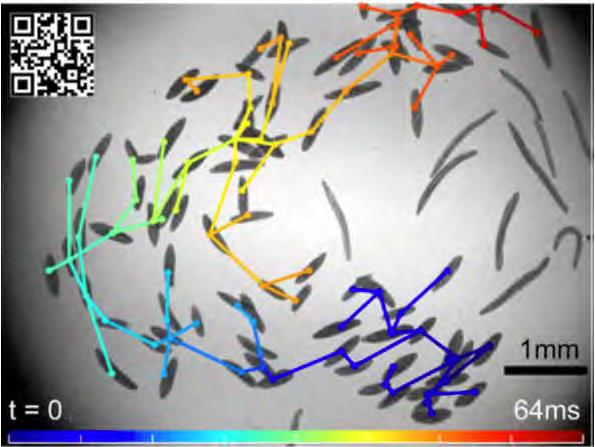Collective functionality in intelligent active matter: Bridging multi-scale biology with physics of solids, fluids & information
Time
Tuesday, 17. December 2019
13:30 - 14:30
Location
M628
Organizer
Speaker:
Arnold JTM Mathijssen, Stanford University
Arnold JTM Mathijssen is a Postdoc in the Department of Bioengineering, supported by a cross-disciplinary fellowship of the Human Frontier Science Program at Stanford University. As joint theorist and experimentalist, he is interested in the physical aspects of ultra-fast biology and hydrodynamic communication between cells, mucus clearance in mouse airways, and bacterial contamination dynamics. He also works on the physics of microbial ‘active carpets’, interactions between microswimmers and viruses, and upstream swimming of cells in viscoelastic fluids.
Papers include "Collective intercellular communication through ultra-fast hydrodynamic trigger waves" (bioRxiv) and "Oscillatory surface rheotaxis of swimming E. coli bacteria" (Nature Communications)
Collective functionality in intelligent active matter: Bridging multi-scale biology with the physics of solids, fluids and information
Biological systems flourish through collective functionality, by self-assembling into cells, tissues, flocks and parliaments. Understanding this multi-scale organization also lies at the heart of modern engineering and medicine: Pathologies can arise from deficiencies in collective functionality, while active and adaptive materials can be designed from controlling systems out of equilibrium. In this talk, I will overview our recent work on building first-principle theories, numerical tools, and experiments for studying the fascinating physics of life. We will first focus on reliable communication in ultra-fast biology, exemplified by the discovery of ‘hydrodynamic trigger waves’. Second, we will discuss bacterial contamination dynamics, which is enhanced by the ability of cells to swim against flows. Third, we consider the role of topology in biofunctionality, especially in ‘active carpets’ like ciliary arrays. These insights open up exciting new avenues towards unravelling synthetic and biological active matter, through collective functionality, together.

